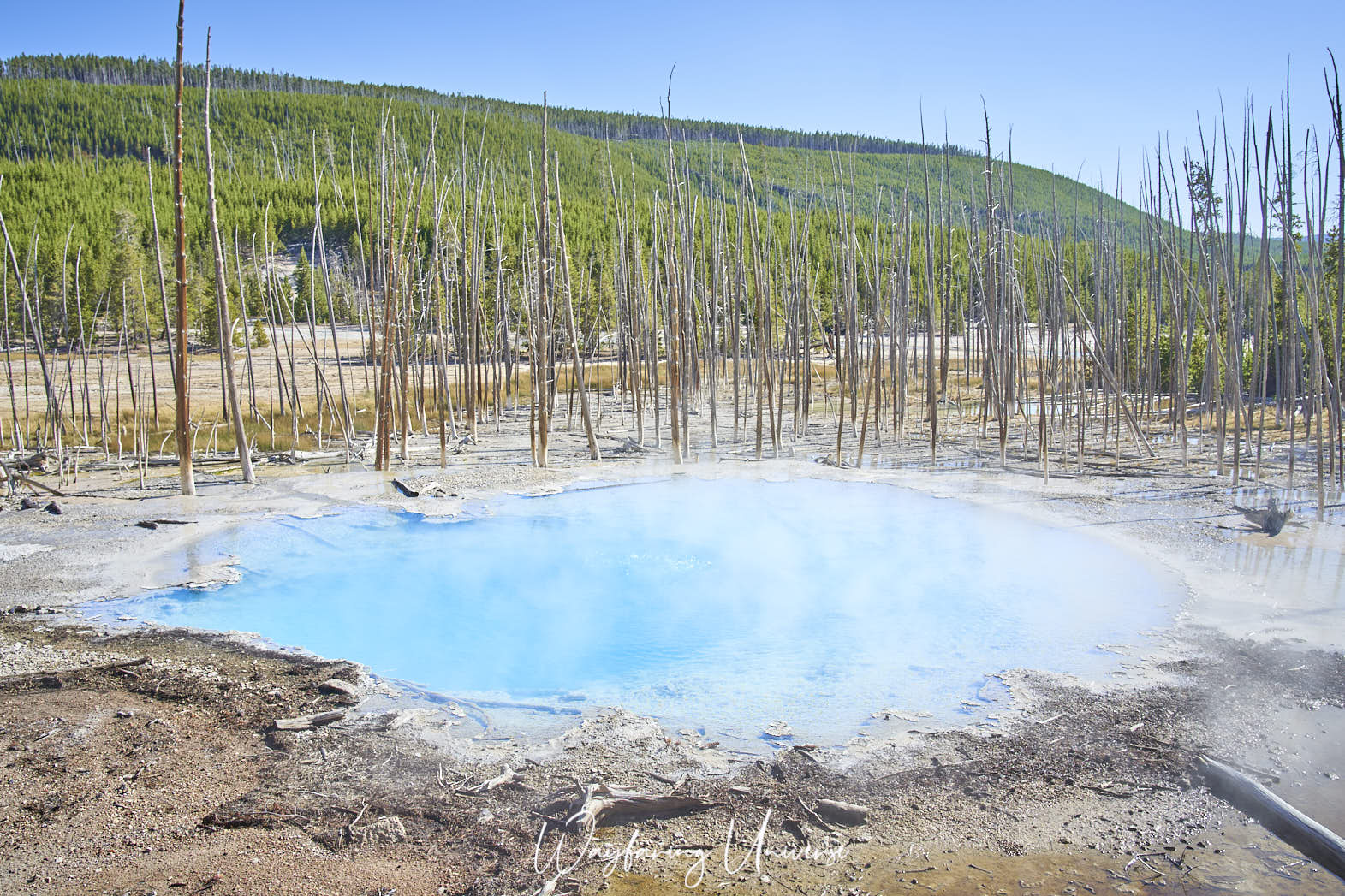10 hot springs not to miss in Yellowstone
Many people plan their trip to Yellowstone in the winters or during shoulder season, which absolutely has its charms and appeal. Yellowstone is such a unique place that it offers so much, no matter when you visit. But if it is your first trip there, I would recommend going in summer, preferably on sunny days, to enjoy those vibrant colors.
What colors you will see essentially depends on what time of the day you are visiting. Keep this in my mind whenever you are planning a trip to Yellowstone. Usually, the springs display their best colors at midday when their depths are fully lighted, and there are no shadows, and of course, when it is sunny. Also, the amount of steam rising is at its lowest. This is Yellowstone 101 - if you want the best views - choose a sunny day.
However, if it is not at all possible to plan a longer trip (doing all the pools, geysers, etc. will take a long time) or during summers or you don’t have much time at hand, just shortlist your top 5 or 10 pools and make sure you visit them when there is full sunlight. 12:00 pm to 4:00 pm is the best time to hit them up during summers.
1. Grand Prismatic
Location : Midway Geyser Basin
This is Yellowstone’s star attraction and the most visited section in the park. The great American poet Robert Frost once noted, “some say the world will end in fire, and some say in ice.” In Yellowstone, the world began with fire and ice and continues to be molded by both. Given an opportunity, Grand Prismatic Spring is one thing everyone should see once in their lifetime.
A common boardwalk takes you to the Excelsior Geyser, Opal Pool, and the Grand Prismatic. Also, do not forget to visit the Grand Prismatic Overlook, which can be reached by a 1.2-mile out-and-back trail. The trail starts 1 mile south of Midway Geyser Basin at the Fairy Falls Parking Lot. The overlook is on a small hill that gives you the best views of the spring.
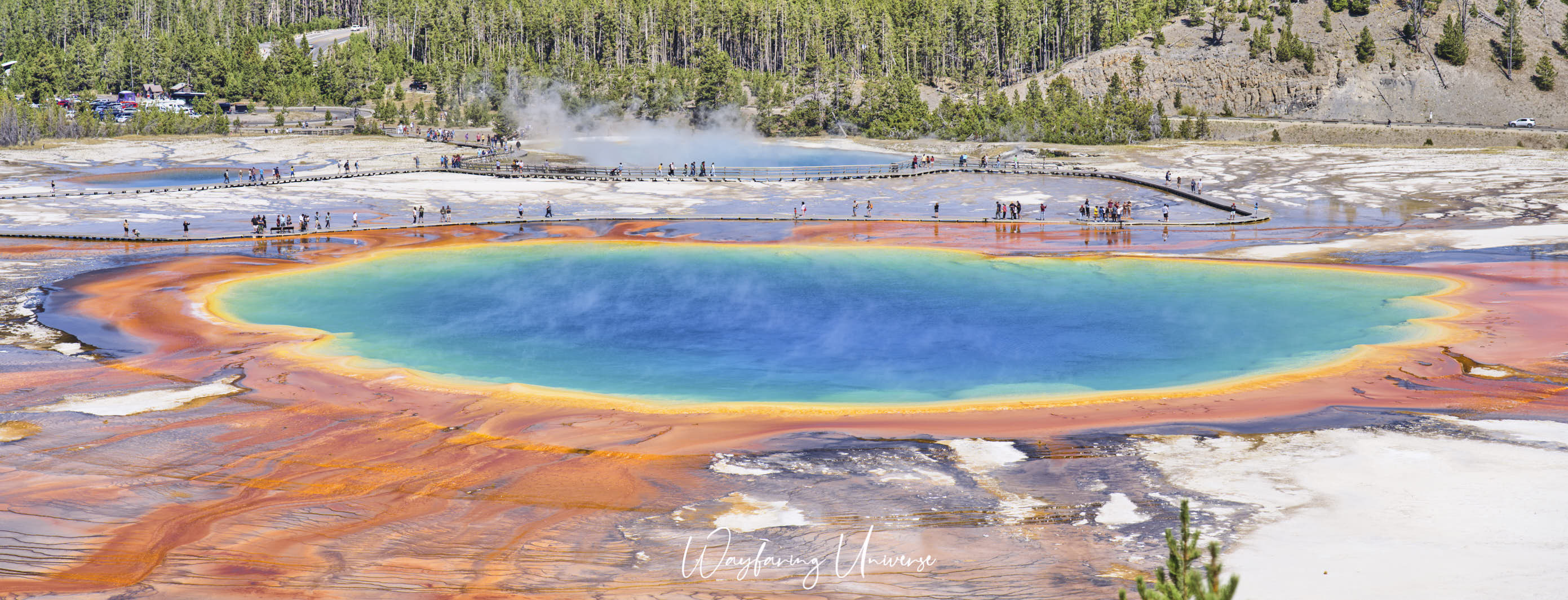
Excelsior Geyser Crater is just next to the Grand Prismatic Spring and is hard to miss. Now primarily dormant, it was very active in the 1800s.
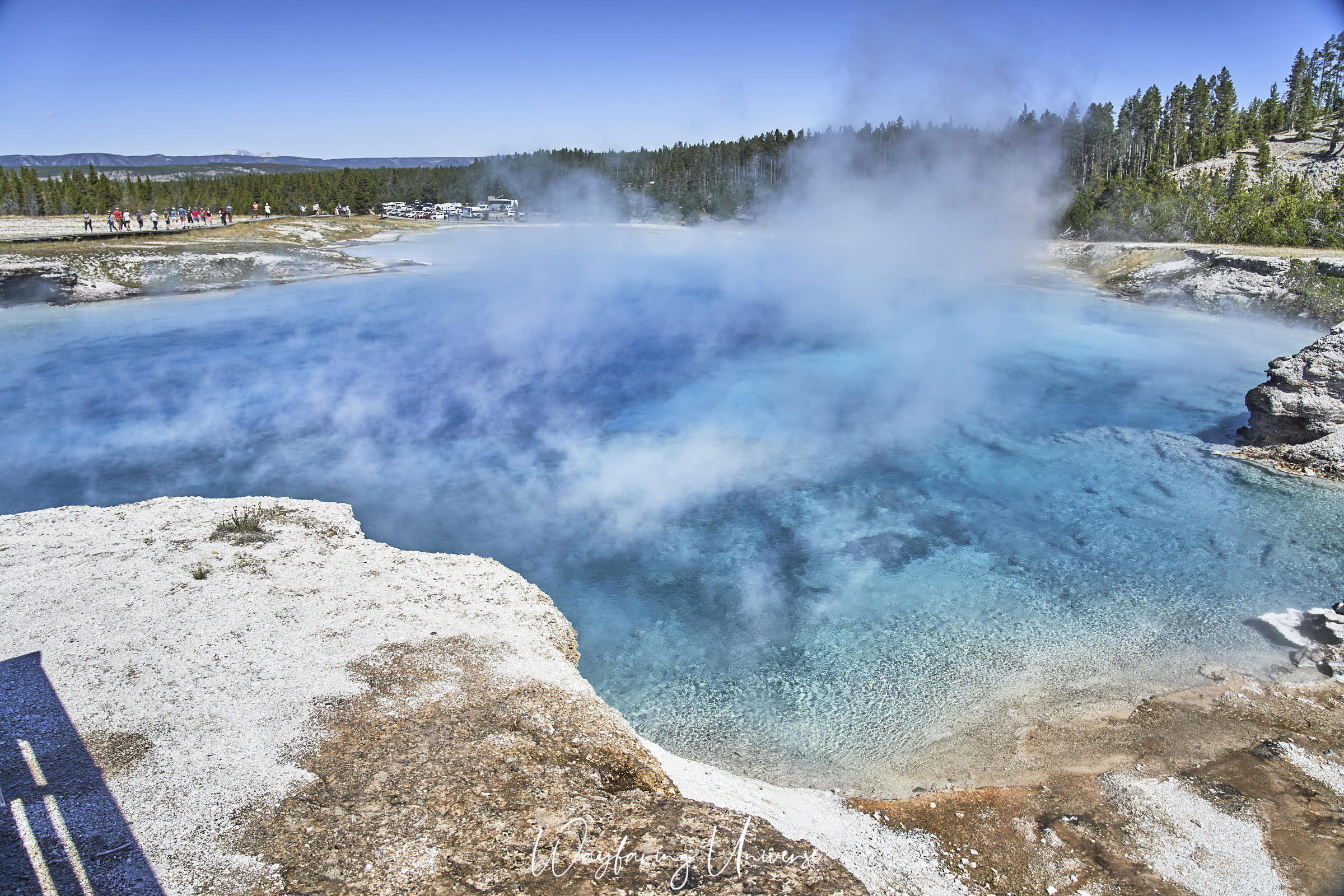
2. Morning Glory
Location : Upper Geyser Basin
Morning isn’t a good time to see Morning Glory :) We had to make a painful second trip of 3 miles to get some unobstructed views of the pool. Also, the colors were better in the afternoon, probably because of the absence of morning steam. We took this second picture around 8:30 in the morning, and the view was blocked by the shadow (sometimes reflection) of the safety railings. So we had to go back again to see when Morning glory was at its best, couldn’t have missed it for the world. And we were not disappointed at all and saw this (picture 1) around 3:45 pm. I think Morning glory is one of the most beautiful pools in Yellowstone, of course, after the world-famous Grand prismatic. Sadly it is not the same as it used to be.
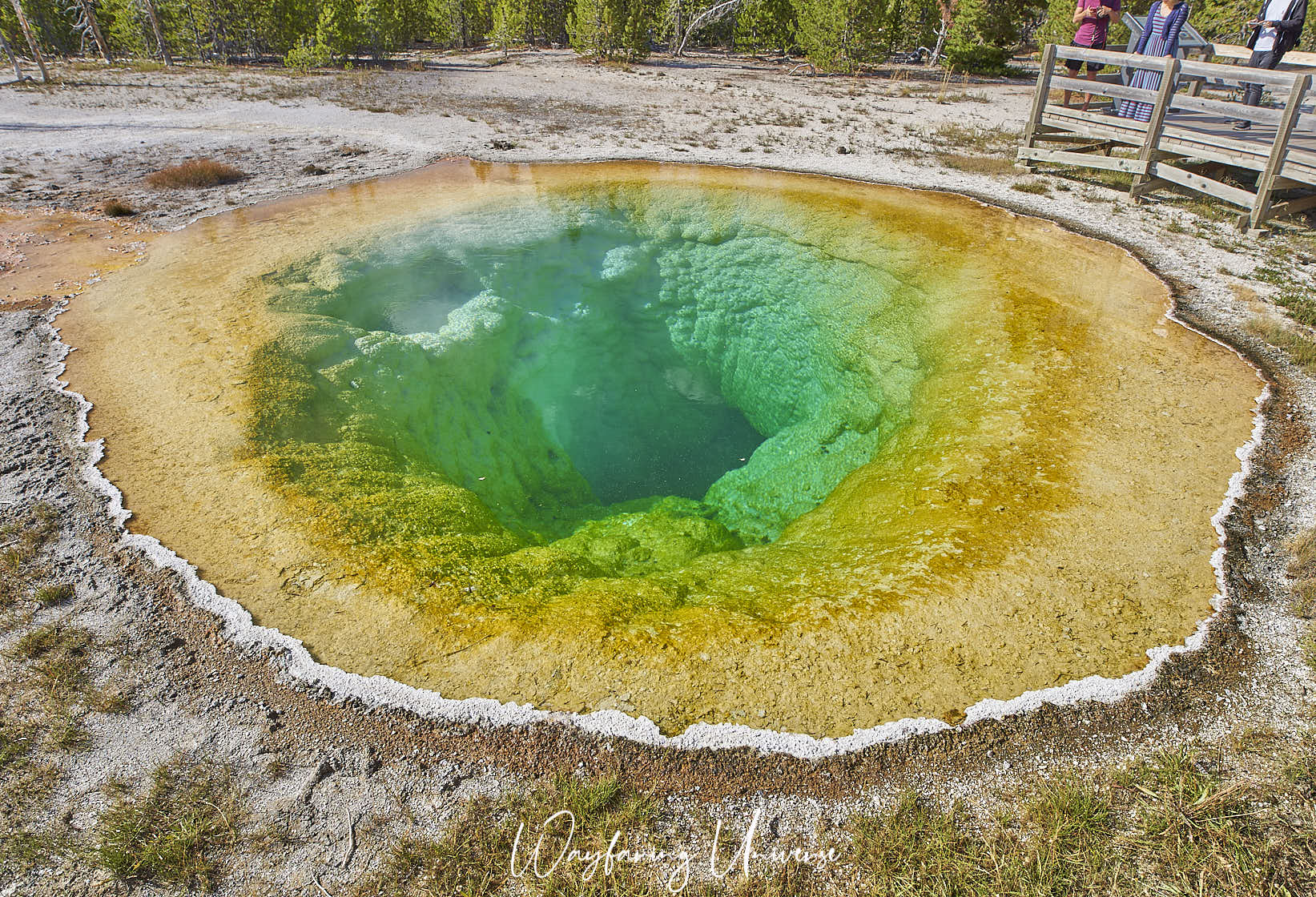
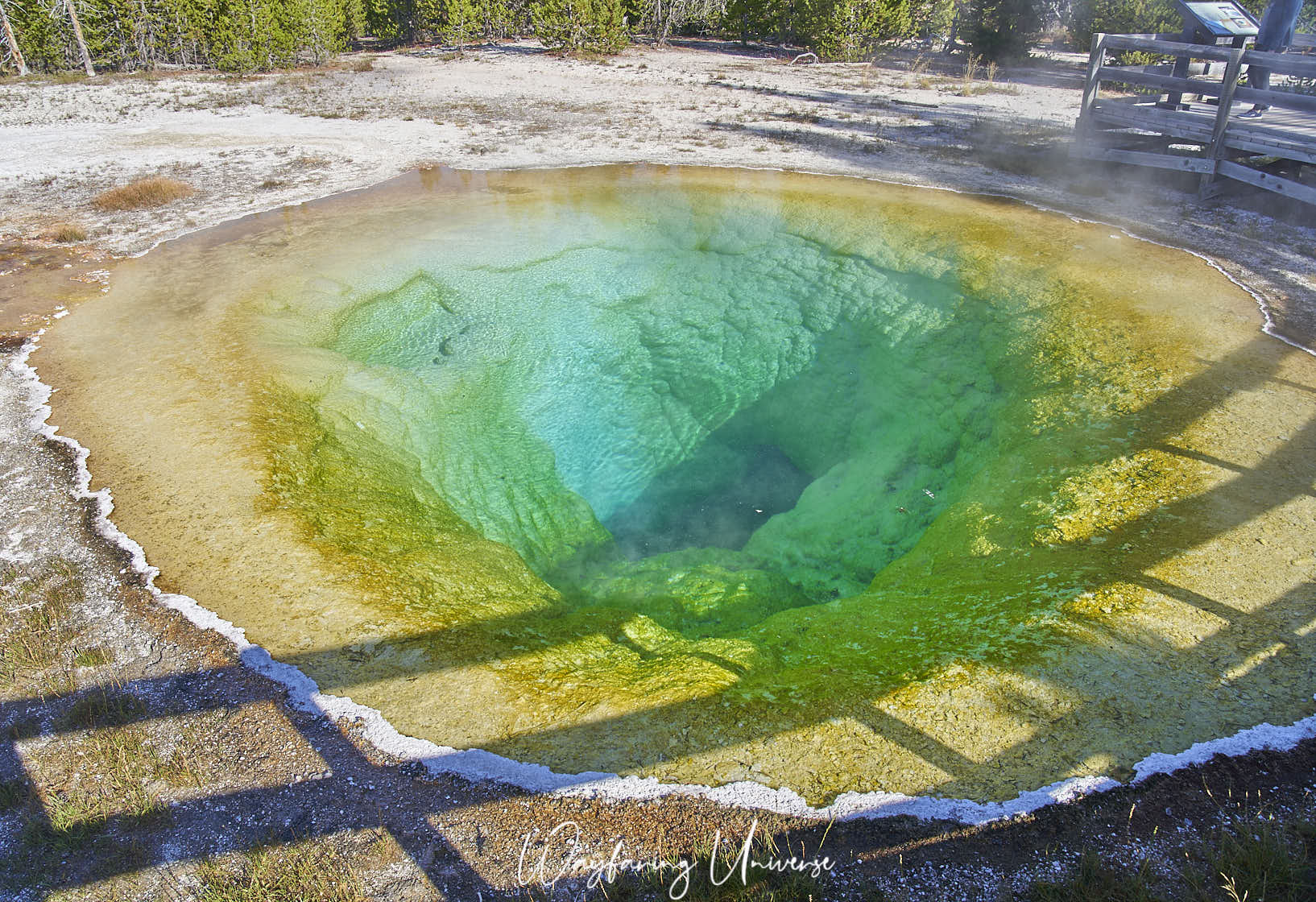
Morning glory pool got its name for its limpid blue colors resembling the Morning glory flower. For over a century, the pool has greatly suffered from vandalism. People have thrown tons of coins, rocks, bottles, and trash into the pool. That built up for years and eventually blocked some of the thermal vents and reduced the water’s overall temperature, which resulted in a changed appearance of the pool. The disappearing blue was taken over by those oranges and yellows, while those hues are beautiful, it may never recover within our lifetime.
3. Sapphire Pool
Location : Biscuit Basin
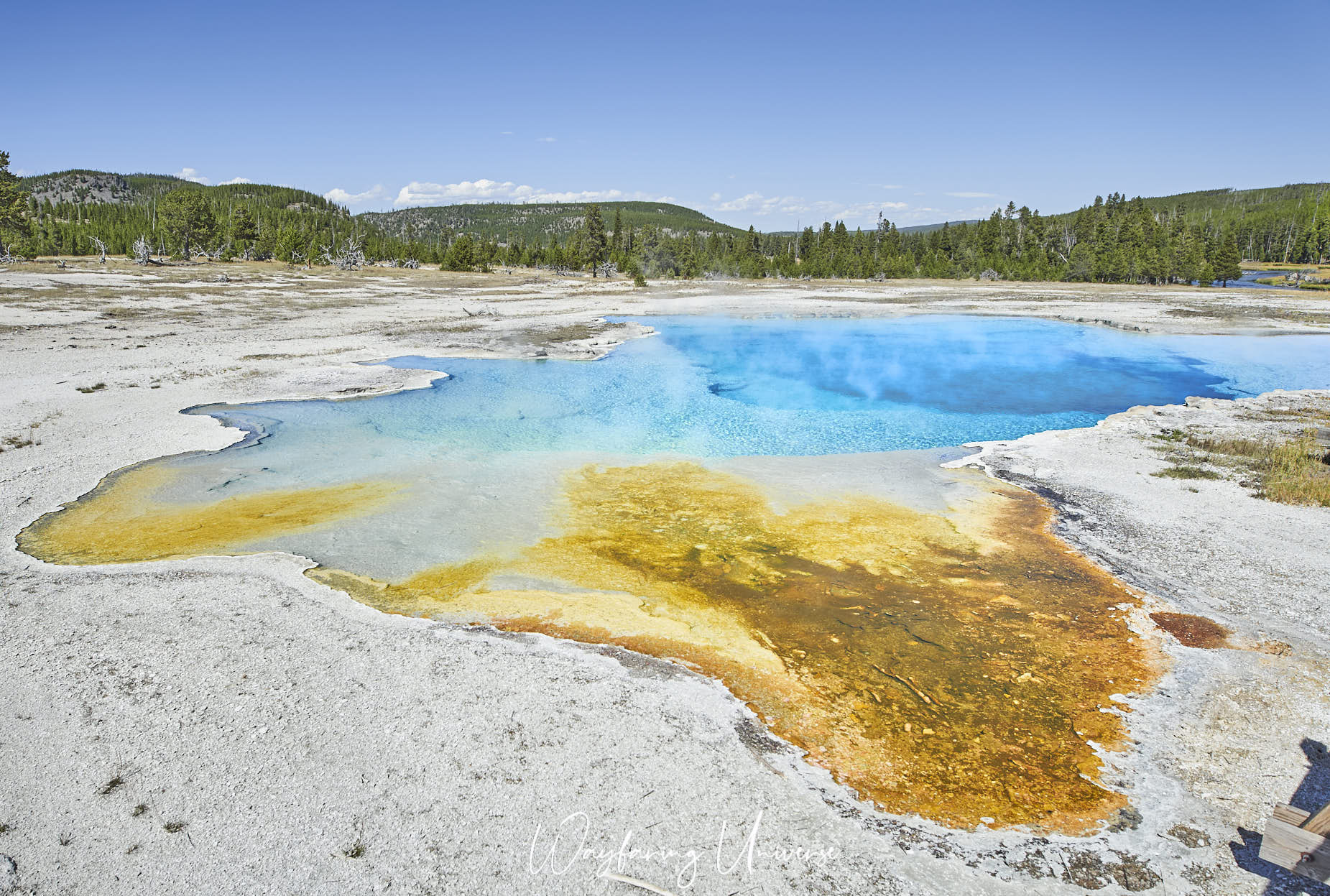
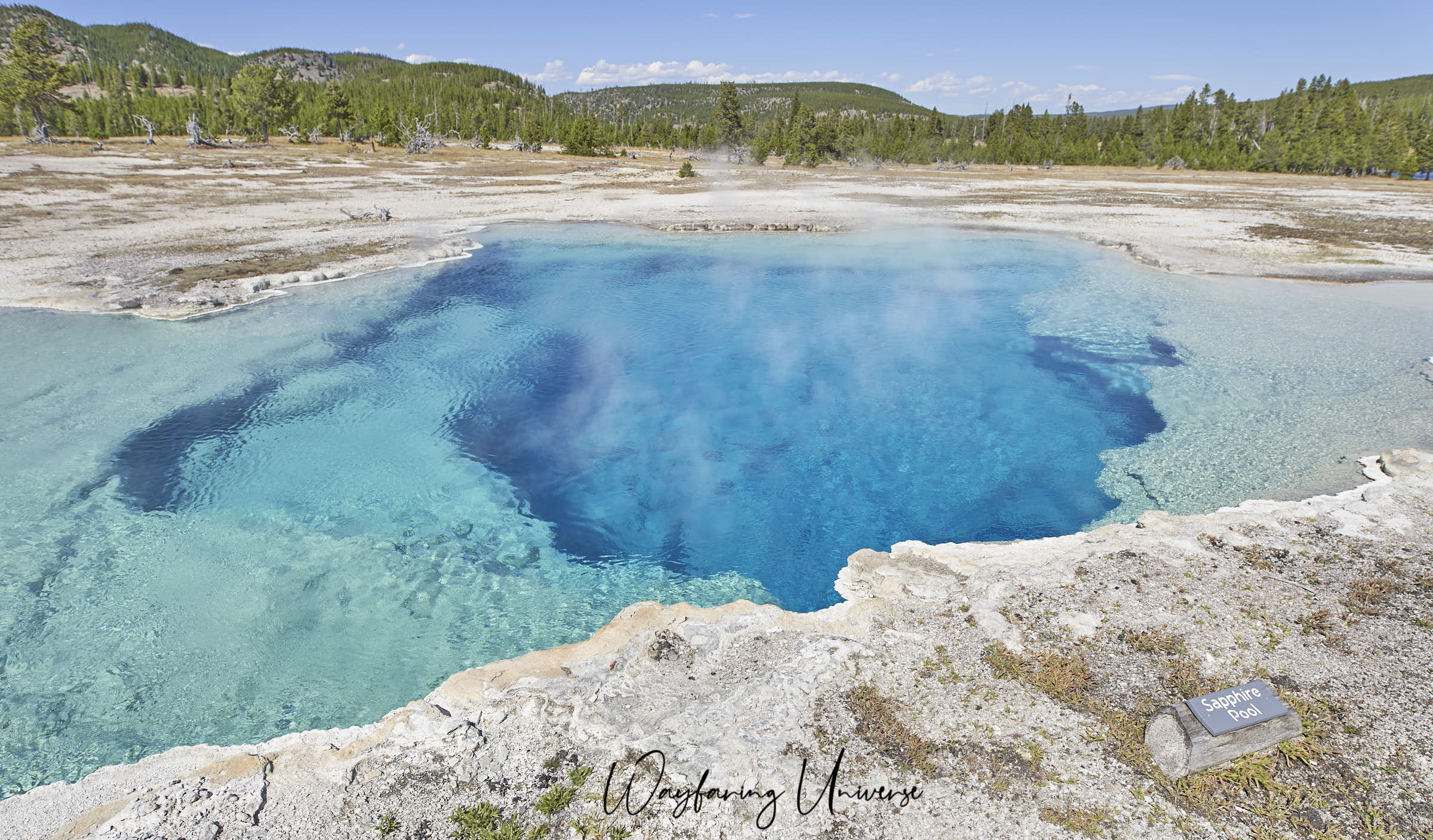
4. Belgian Pool
Location : Upper Geyser Basin
Springs like these are scattered like shimmering jewels in a multitude of colors across the park’s volcanic plain. Unfortunately, the Belgian pool got its name when a tourist from Belgium died after falling into the spring of 1929. It lies in the Upper Geyser Basin of the park.
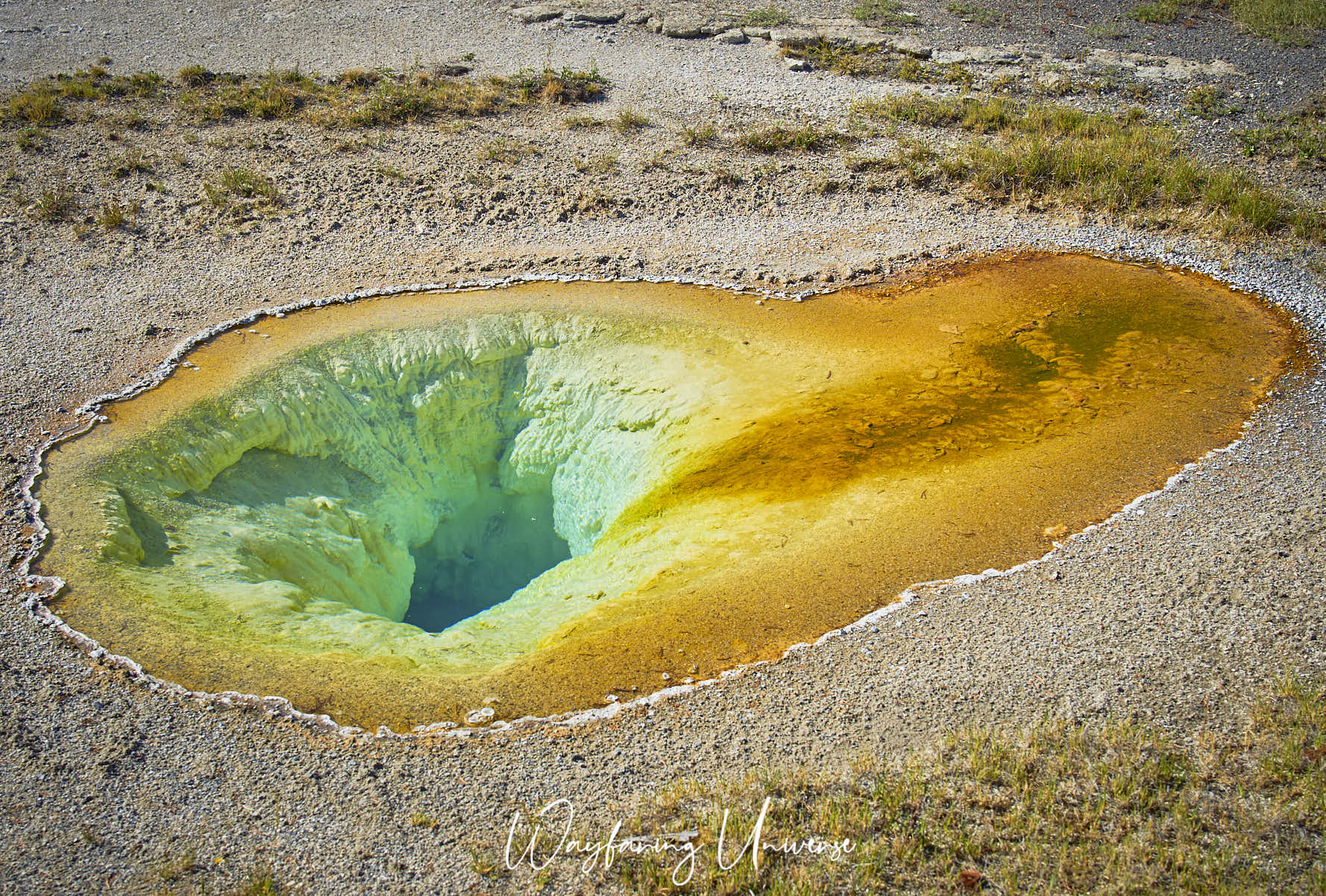
5. Firehole Spring
Location : Midway Geyser Basin
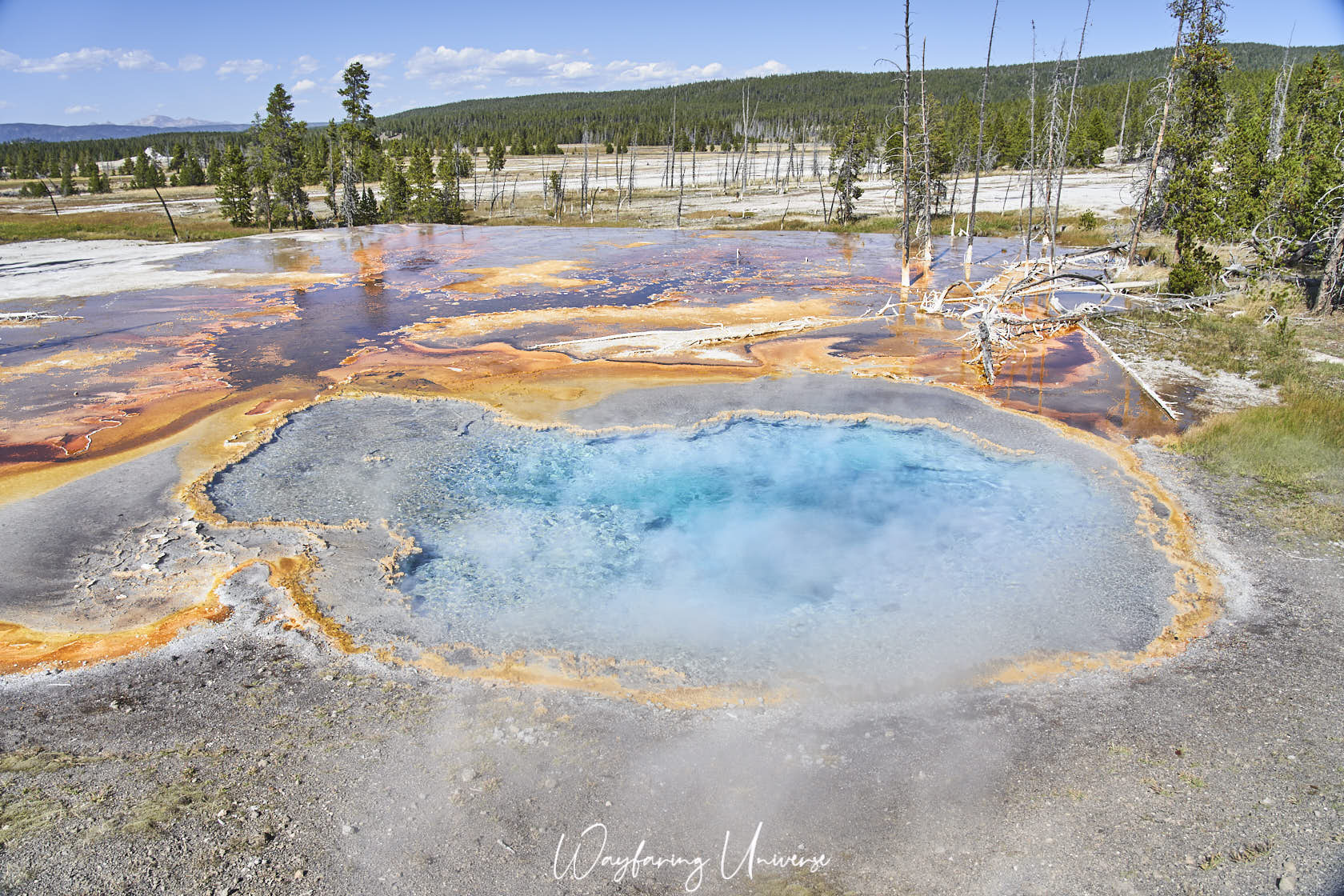
6. Chromatic Spring
Location: Upper Geyser Basin
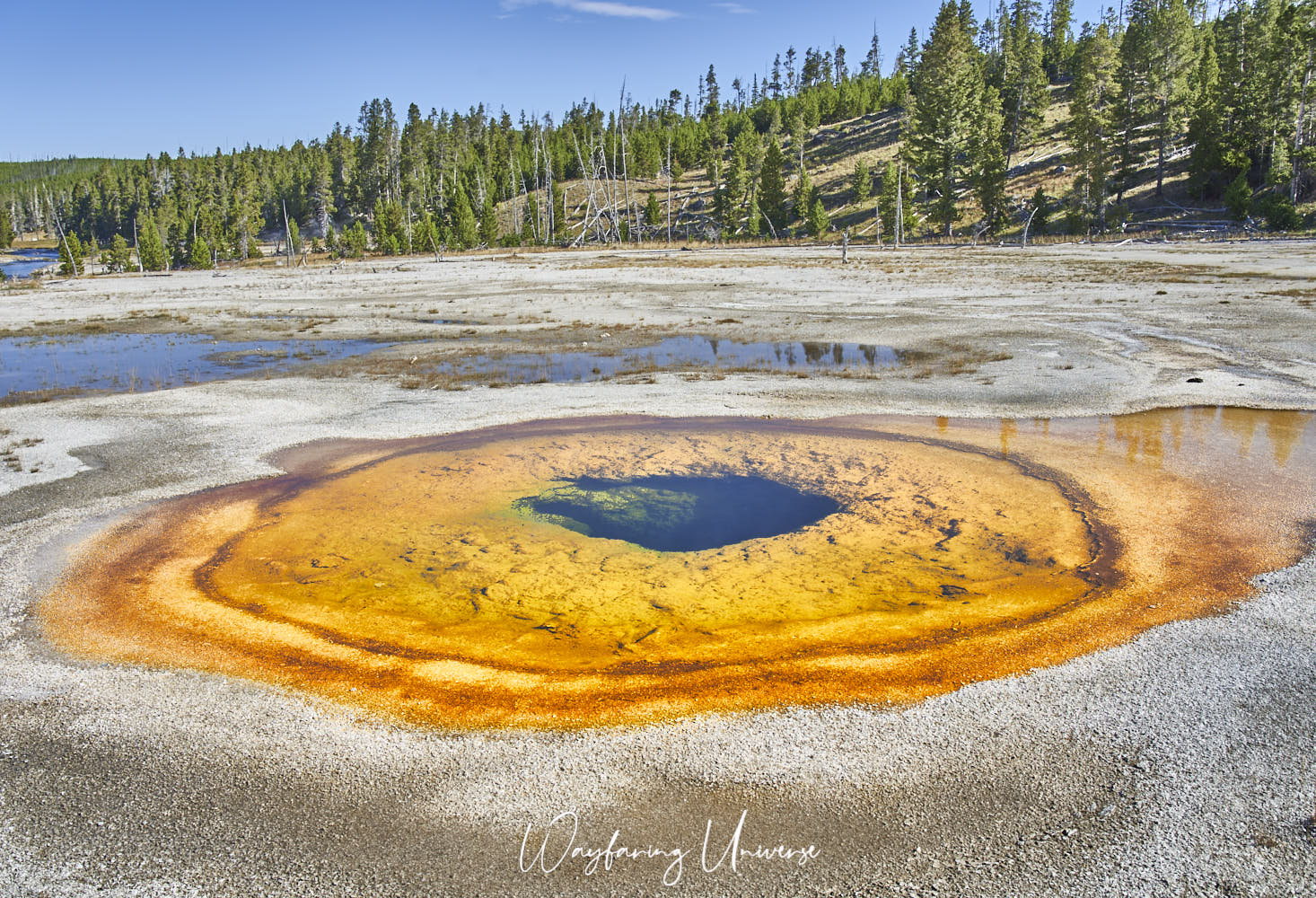
7. Doublet Pool
Location: Upper Geyser Basin
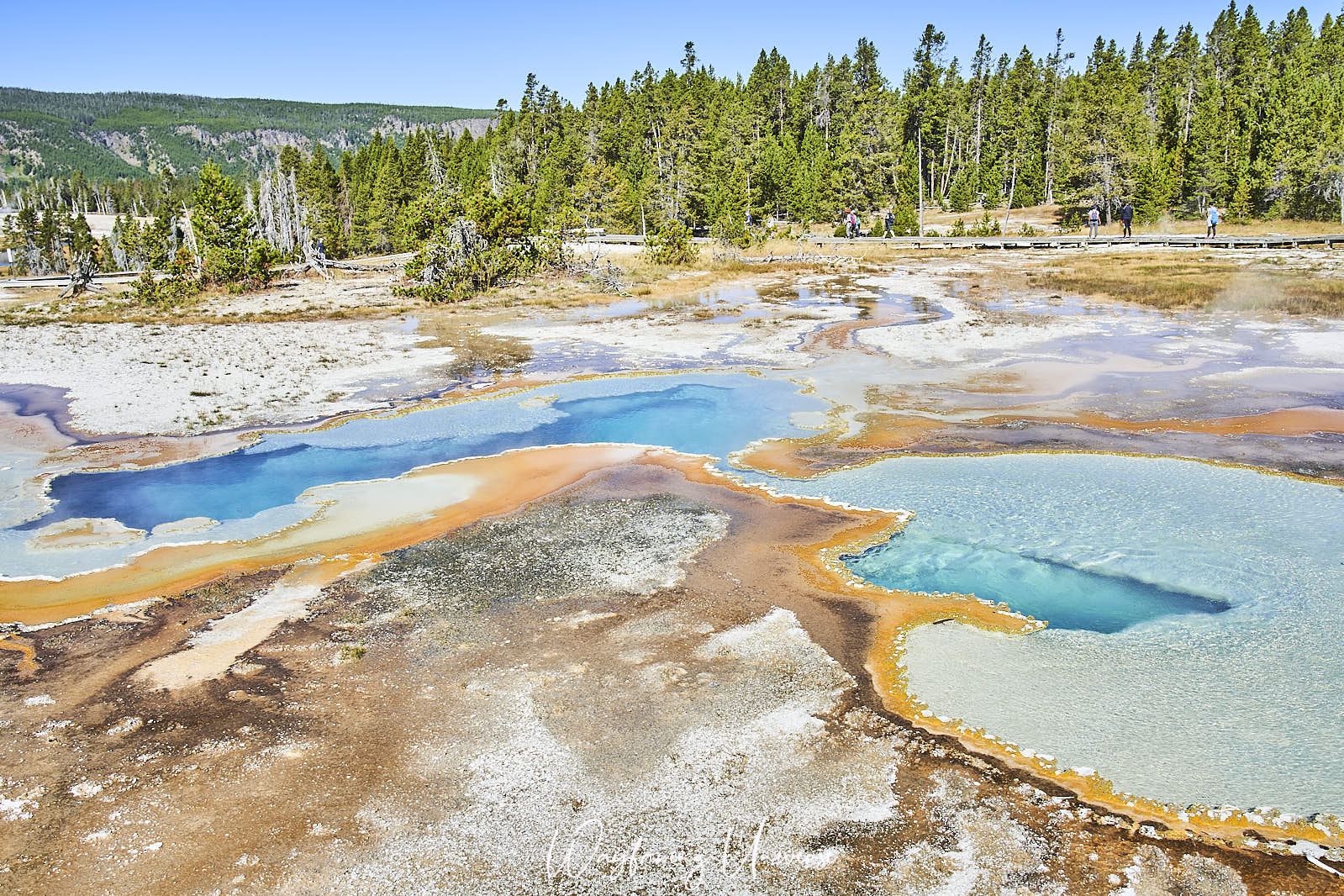
8. Emerald Spring
Location: Norris Back Basin
Emerald Spring lies in the Norris Back Basin. It can dramatically transform its color. Usually, it is greenish in color, hence the name. But sometimes, when the water boils up, it could turn blue, as it was the case when we visited.
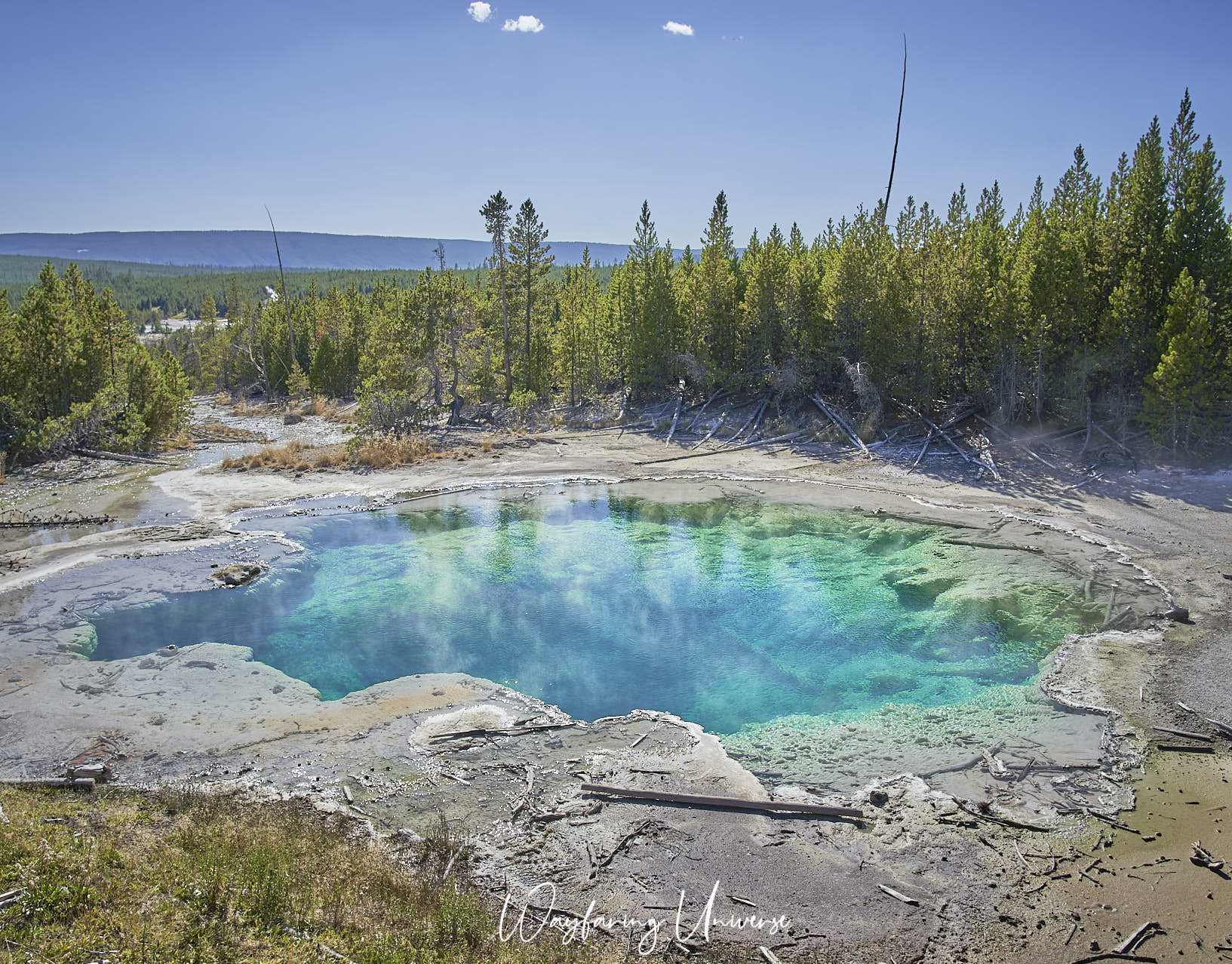
9. Echinus Geyser
Location: Norris Back Basin
Echinus is the largest acid-water geyser known. The eruptions have been rare after 1998, the last one being in January 2019. During its active years, it was pretty much erupting every 35 to 75 minutes. It is easily accessed through a boardwalk in the Norris back basin.
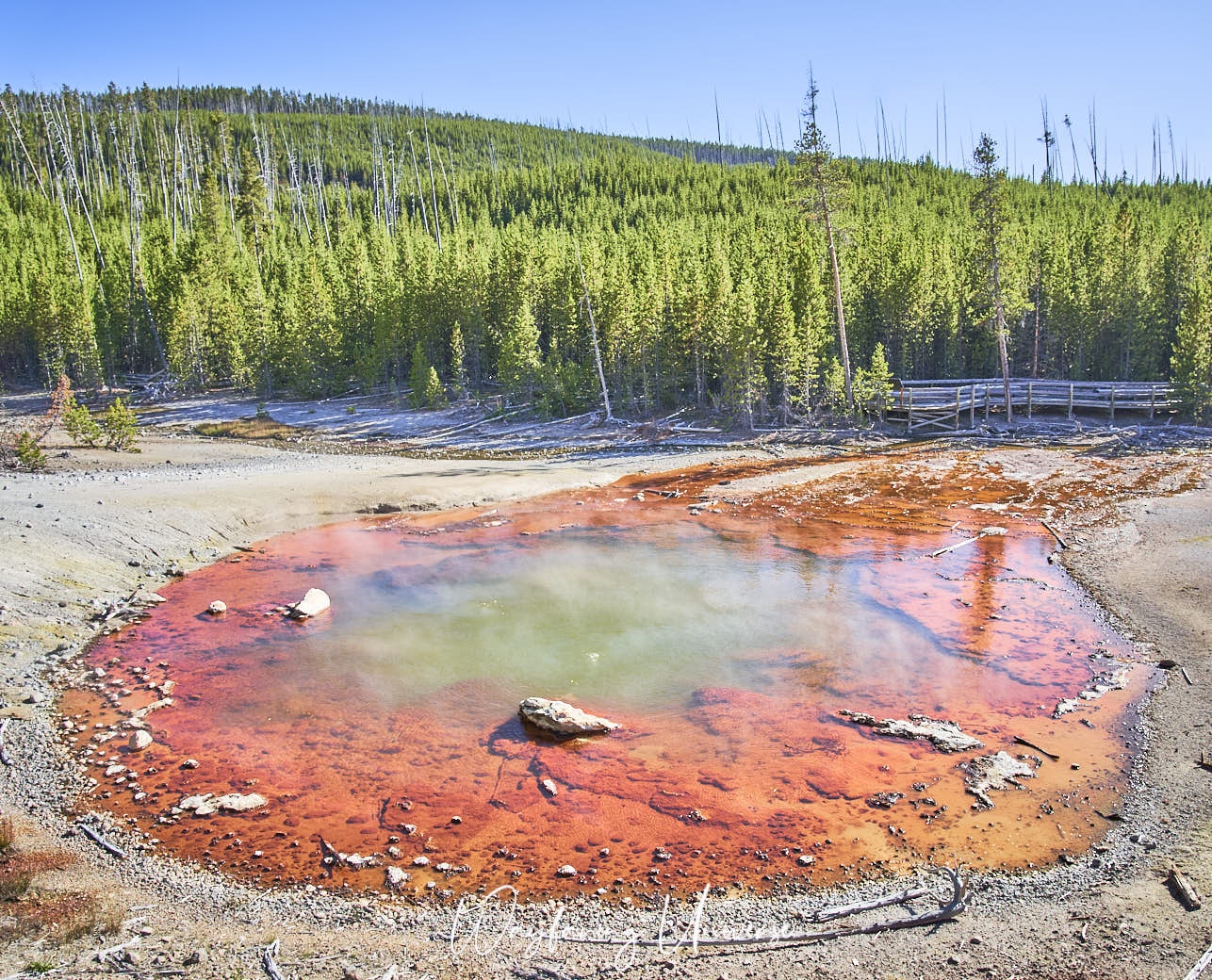
10. Cistern Spring
Location: Norris Back Basin
Typically, Cistern Spring is more greenish like the neighboring Emerald Spring, but we got to see its bluish side. This was due to the disturbance in the spring temperatures. The increase in temperatures turns green into blue. Yellowstone holds the planet’s most diverse and intact collection of geysers, hot springs, mud pots, and fumaroles. Nothing could ever match this.
